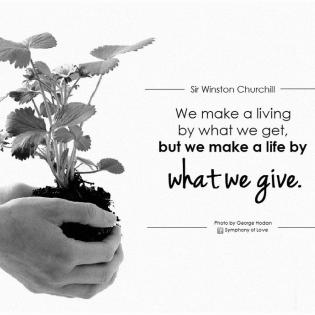The Cookie Crumbles
Youth Activity: Participants will discover that sharing and trust are important parts of philanthropic action. See the handout for supplemental faith-based discussion questions.
“The point is not to pay back kindness but to pass it on.” ~Julia Alvaraz
The youth will
- demonstrate how sharing and trust are important parts of giving and receiving in the community - philanthropy.
- problem solve and share.
- sandwich cookies or graham crackers (units that are easy to share)
- chart paper, markers, easel
- room to meet as whole group and in pairs
Note: This activity assumes that the participants have some knowledge of the definition of philanthropy.
Ask participants to try a sharing and trust experiment with a friend or family member. Ask the friend or family member if they would like to share one cookie. Tell your friend or family member that you trust them to divide the cookie equally. Give them the cookie and watch how they divide the cookie and share it with you. Were your friends or family members trustworthy in dividing the cookie? Report back what happened next time you are together.
- How did you divide the cookie?
- What role did trust play in sharing the cookie?
- How is trust important when we share with others in community?
- Why do you think trust is important when you share your time, talent, and treasures?
Instructions
Tell the participants that today they will be using a cookie to show how sharing and trust are important parts of philanthropy. Say to the group, “Trust me. I promise that each one of you will get a cookie.”
Have the participants think of someone they trust from their family or the community. Ask a few participants to share with the group the name of someone they trust. Discuss: Why do you trust these people? What do these people do that makes you trust them? As the participants share their answers, write their answers on chart paper, under the word “TRUST.”
Ask the participants if there are people who trust them. Ask, "Why do these people trust you?" Circle words already mentioned and add new words to the TRUST chart paper.
Divide participants into pairs and have them sit together. Explain to the participants that they are now going to do a sharing and trust activity using cookies.
Hold up one cookie and ask the participants to raise their hand if they would like the cookie. After numerous hands are raised, say that to share it between that many people the best way was to crumble the cookie into the smallest possible pieces (demonstrate this) so that everyone can have an equal share of the cookie. Have participants reflect on the “fairness” of doing it this way. With another cookie, break it more coarsely and suggest that you could give one or two people big pieces of the cookies and then crumble the rest for everyone else – demonstrating inequality in sharing. Discuss the fairness of this.
Tell the students that they are going to work in pairs to figure out how to share one cookie with two people and demonstrate trust. Hold up a whole cookie and asks the pairs to think about these questions before you give them the cookie: “How can you best share the cookie with your partner? How can the two of you make sure that you equally share the cookie? How can you make sure that the cookie will be divided evenly?” Give the pairs 2-3 minutes to discuss and plan how they might equally share the cookie.
Each pair is given one cookie and asked to divide the cookie equally. Instruct the participants that when the pair has divided the cookie so that both participants are satisfied, they are to stand up and give a high-five to their partner. The teams should announce loudly, “I trust you!” Once they have done this, they may eat their half of the cookie.
Ask the participants if anyone remembers the promise made before the activity began. The promise was that everyone would receive a cookie. Ask the participants: “Did you trust me to keep my promise? Why did you trust me to keep my promise?” Thank the participants for their trust and tell them: “You never know what good things can come when you share and trust in others!” Pass out a cookie to each person.
